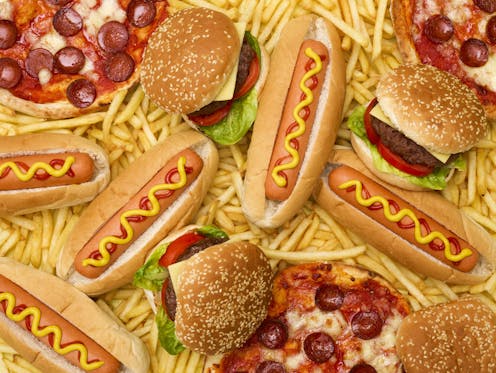Coronavirus diets: What's behind the urge to eat like little kids?
- Written by Carli Liguori, Instructor of Nutrition and Behavior Change, University of Pittsburgh

Have you noticed grabbing an extra bag of chips at the supermarket? Or eating more frozen dinners than you used to? Or even eating snacks that you haven’t eaten since you were a little kid?
The COVID-19 pandemic[1] has upended nearly every facet of our daily lives, from how we dress, to how we work, to how we exercise.
It’s also changing the way we eat. As a registered dietitian and nutrition researcher[2], I’m fascinated by the types of food people are buying during this strange time.
One recent survey[3] found that 42% of respondents indicated they’re purchasing more packaged food than they typically would and less fresh food.
Sales of frozen pizza have almost doubled. Sales of frozen appetizers and snacks – think Bagel Bites – are over a third, while ice cream sales have increased 36%.
According to Uber Eats[4], the most common food delivery order in the United States has been french fries, while the most popular beverage has been soda.
To me, these foods have one thing in common: They’re the stuff we ate as kids.
Why might grown adults be reaching back into the pantry of their pasts? What is it about a pandemic that makes us feel like we’re teenagers at a sleepover?
The reasons are deeply rooted.
At its core, the purpose of food is to nourish. Of course food provides us with the necessary energy and balance of vitamins and minerals to power and fuel the body. But anyone who’s reached for a pint of Ben and Jerry’s after a particularly stressful day will know that nourishment is about more than nutrition.
During periods of stress, people tend to eat more and show a greater preference for higher calorie foods[5]. The sweeter and saltier the better. Regardless of hunger, a tasty snack can feel comforting[6]. There’s evidence to suggest[7] that highly palatable foods, especially those high in fat and sugar, may illicit a response in the brain that is similar to the response from opioids.
Yes, a delicious slice of rich chocolate cake can be just as good as drugs.
We tend to call many of these foods “comfort foods,” but the definition of comfort food is a bit slippery. Food is deeply personal. The foods that comfort people depend on their cultural background, taste preference, and personal experience. We know, however, that food can induce feelings of nostalgia[8] that transport us back to simpler times.
So perhaps it’s no surprise that, during a period of uncertainty that has many of us desperate for some relief and comfort, the foods of our childhood can act as a salve. For some of us, that bowl of Lucky Charms isn’t just a sweet treat; it’s a reminder of days gone by, a time of safety and stability.
There’s nothing inherently wrong in finding temporary relief from chaos and uncertainty through food. But it’s probably best to view these changes in eating behavior as a temporary habit during a weird time. After all, a diet rich in macaroni and cheese and chicken nuggets doesn’t exactly set our bodies up for long-term success.
As people’s lives start to regain some sense of normalcy, diet can actually be a major part of the equation. Returning to a more health-conscious diet could be part of reestablishing your previous routines. And if you’ve never been able to find the time to prioritize healthy eating, now could actually be a good opportunity to start laying the groundwork for habits that become the new normal.
[You need to understand the coronavirus pandemic, and we can help. Read The Conversation’s newsletter[9].]
References
- ^ COVID-19 pandemic (theconversation.com)
- ^ utrition researcher (academic.oup.com)
- ^ recent survey (foodinsight.org)
- ^ According to Uber Eats (www.msn.com)
- ^ people tend to eat more and show a greater preference for higher calorie foods (oce.ovid.com)
- ^ a tasty snack can feel comforting (doi.org)
- ^ evidence to suggest (doi.org)
- ^ feelings of nostalgia (doi.org)
- ^ Read The Conversation’s newsletter (theconversation.com)
Authors: Carli Liguori, Instructor of Nutrition and Behavior Change, University of Pittsburgh
Read more https://theconversation.com/coronavirus-diets-whats-behind-the-urge-to-eat-like-little-kids-137864

